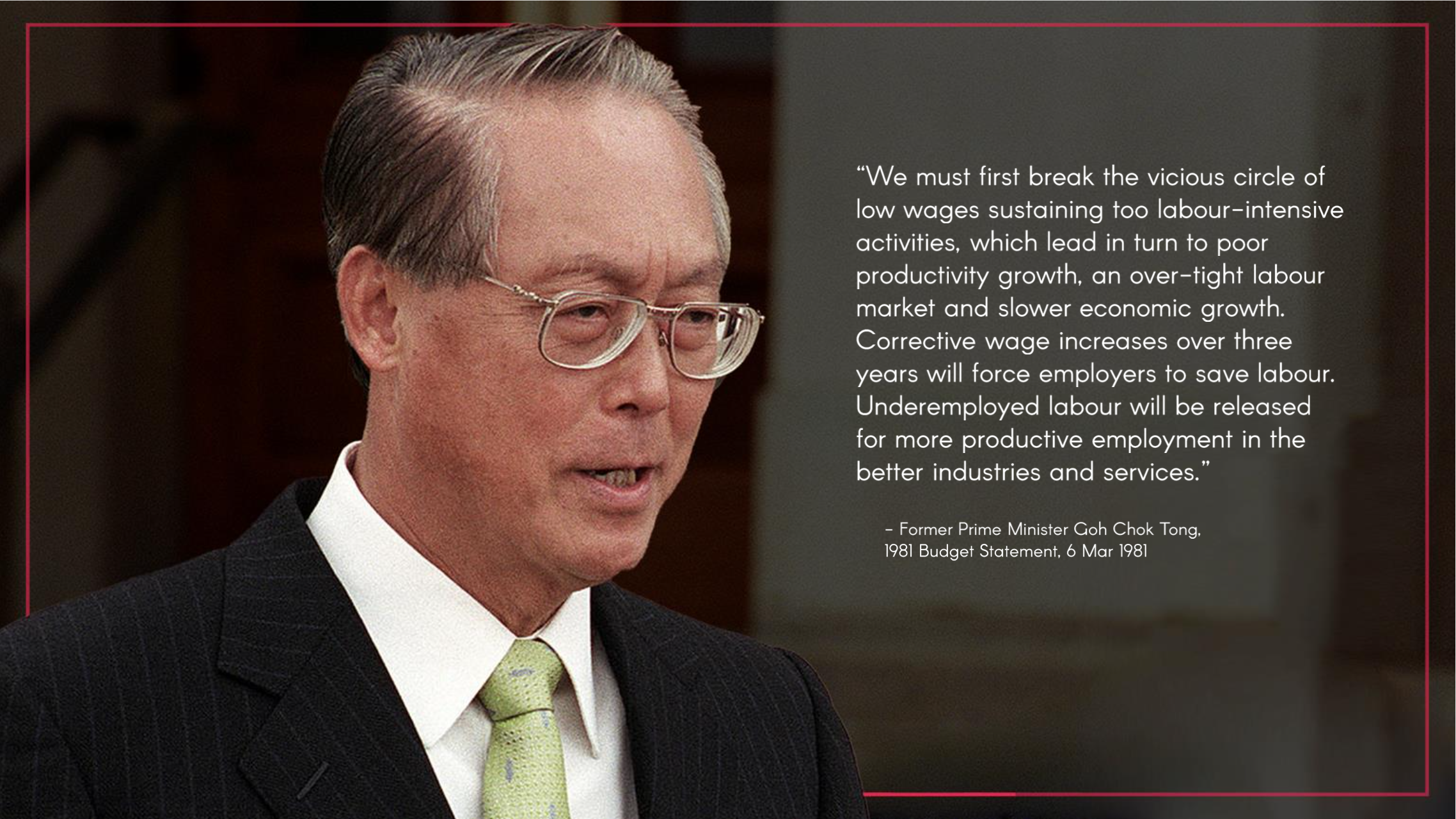1979 to 1984: Economic Restructuring
1979 to 1984: Economic Restructuring
By the late 1970s, more capital-intensive industries had been set up in Singapore. While Singapore was successful in using incentives to attract foreign investors and companies, the pace of growth was not quick enough.
1979: Three-Year Corrective Wage Policy
In order to accelerate the economic restructuring programme, the National Wages Council (NWC) adopted a three-year corrective wage policy in 1979. This comprised strong wage increases and hikes in the CPF contribution rates to account for the full-employment state of Singapore’s economy.

With that, companies quickly began adopting higher-value work. At the same time, companies that were producing lower-value products moved out of Singapore to cheaper off-shore locations.
Net investments between 1980 and 1984 averaged $1.7 billion a year. This was led by an expansion in high value-added industries such as computers, electronics, machinery, and pharmaceutical products.
Investing in Infrastructure
At the same time, Singapore continued make bold investments in upgrading our infrastructure to facilitate and improve international connectivity.
As a small city-state, Singapore is heavily dependent on international aviation links to the rest of the world. That was why early leaders took an interest in the developing Singapore’s aviation links and airports.
In 1966, just a year after independence, Singapore became a member of the International Civil Aviation Organisation (ICAO), a body under the United Nations (UN).
Then-Prime Minister Lee Kuan Yew also advocated moving the airport from Paya Lebar to Changi in the 1970s. This went against the advice of foreign experts who had suggested building a second runway at Paya Lebar instead, as the airport had cost approximately S$800 million to develop. Singapore would then have to spend another S$1.5 developing Changi Airport.
Despite the challenges, then-PM Lee believed that it was the right decision, especially in the long run. For one, building the airport near the sea would provide the sufficient space for future expansions, and allowing aircraft to enter Singapore over the sea would reduce the noise pollution for residents.
When Changi Airport opened in 1981, it was ranked as the largest airport in Asia, alongside Tokyo’s Narita Airport. It also had the world’s largest column-free hangar, spanning 20,000 m2. It was also completed in just six years, a time frame that was considered record-breaking.
More importantly, the airport was a symbol of Singapore’s ambitions and underscored our drive and efficiency. The move allowed Changi Airport to continuously grow its capacity and upgrade its facilities. Indeed, by 1990, just nine years later, a second terminal was opened. By 1991, Changi Airport was handling more than 15.1 million passengers a year, nearly double the 8.1 million passengers it was handling when it was first opened in 1981.
By the end of the restructuring period, Singapore had succeeded in attracting high-value, capital intensive industries and companies.
However, the restructuring came with a cost: the corrective wage policy coupled with the slump in global demand caused Singapore to enter into its first recession in 1985.


